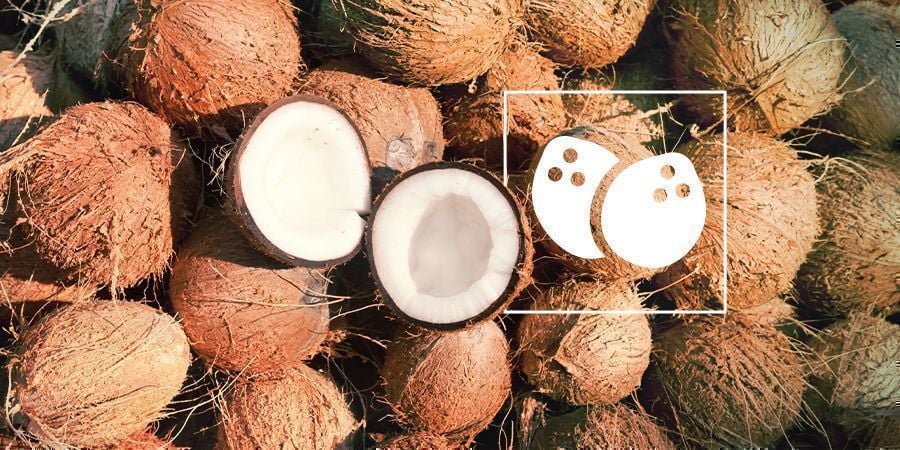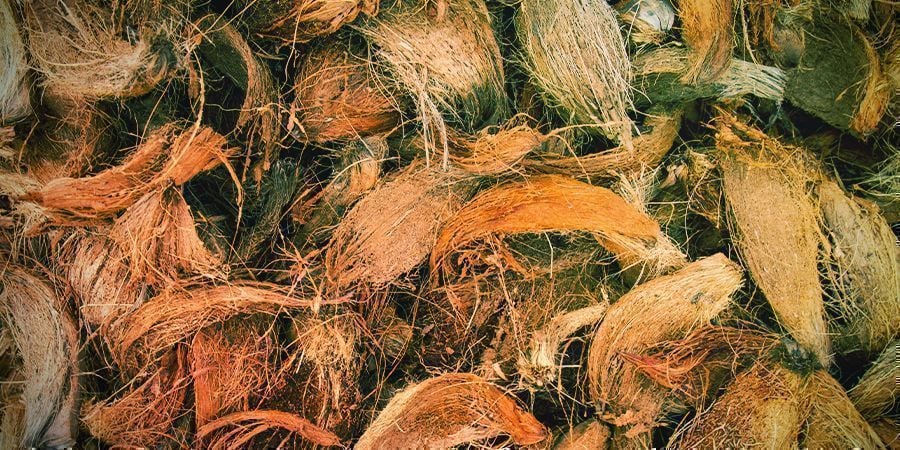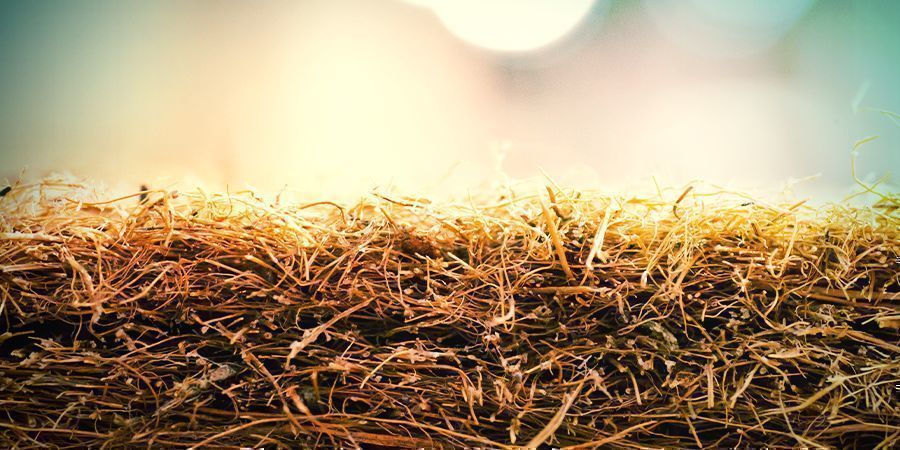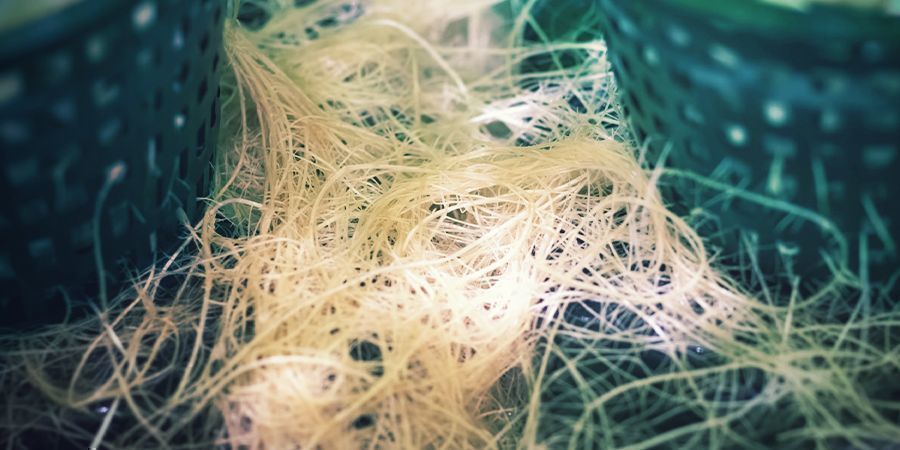Everything You Need To Know About Growing Cannabis In Coco

Coco coir is a uniquely excellent growing medium for cannabis. Used in both soil- and soil-less grows, it provides excellent drainage and aeration for weed plants. Keep reading to learn helpful tips about using coco coir to grow cannabis indoors and outdoors. You'll be a coco pro in no time!
THE HISTORY OF COCO COIR
Coco coir, sometimes just called coco or coir, is a natural fibre extracted from coconut husks (who would’ve guessed, right?) Besides being an awesome grow medium for all kinds of plants (cannabis included), you’ll also find this stuff in doormats, brushes, and mattresses. And while growing a plant in coco coir might seem super new, humans have actually been using coco for thousands of years. Historical texts show that Indian and Arabic sailors used coco to make ropes on their ships and rigs.
By the 19th century, the English had already set up a coir industry, mainly using the material to produce carpets and other types of floor coverings. By the 1980s, it had officially made its way into the gardening industry after being used commercially in Holland to grow roses and lilies. Today, you’ll find all kinds of things made of coir, including pots, baskets, rugs, and much more. One of the world’s biggest producers of coco coir is India. And, of course, you’ll find it at any decent garden center as a growing medium.
GROWING CANNABIS IN COCO COIR
Coco coir is a superb grow medium for all kinds of plants, including cannabis. It has a natural pH of roughly 6.5–7, meaning it is really similar to unfertilised soil. Coir can be used indoors and outdoors, and many growers use it together with regular soil to help improve drainage and aeration of the entire grow media. However, you can also use coco coir on its own as a hydroponic grow substrate.
TYPES OF COCO COIR

There are several types of coco coir available at your local grow shop. Here are some of the most common coir products you’ll likely see:
Coco bricks: Coco bricks are available in a variety of sizes. They need to be soaked, rinsed, and dried before use, unless you’ve specifically bought a buffered and dried brick from the store. Once the brick is dried, you can simply go ahead and mix it into your soil (or perlite if you plan to grow full hydro). Just remember to buy high-quality bricks; poorly made bricks can contain a lot of salt, which won’t be good for your plants, and can be really hard to crumble and mix when preparing your medium.
Pre-mixed coco blends: Pre-mixed coco blends can be bought from a garden center just like regular soil. They usually contain a mix of coco and either perlite, clay pebbles, or both. This is a great option if you don’t have the time or space to buy entire bricks and soak, rinse, and dry them at home. As always, opt for a high-quality mix. Your plants will thank you in the end.
Jiffy pellets: Jiffy pellets are small discs of coco coir. They are really popular when growing seedlings, as they help seedlings develop strong root systems quickly. Best of all, once the seedlings are ready and well-rooted, they can be transplanted into any other grow medium.
HOW TO USE COCO COIR AS A POTTING MEDIUM

Coco coir makes for a great potting medium and can be used on its own, or together with other substrates like regular soil and perlite. Coco coir is particularly popular among indoor growers, who love it for its ability to hold plenty of water while still offering great drainage and aeration. If you plan to use a coco coir mix, you have two options; you can buy ready-made mix from a regular garden centre, or you can make your own at home.
If you choose to make your own, make sure to opt for quality coco bricks, preferably labeled as “low salt”. Once you’ve got your bricks, soak and dry them (as we mentioned above). Once the bricks are ready, you can start breaking them up and mixing them with your soil. The ratio of coco to soil is up to you, but most growers will use around 10–20% coco. Once you’ve finished mixing, you can also add a touch of compost or fertiliser to the mix to help make for a more nutrient-rich growing medium.
Some growers also like to mix coco coir with perlite and soil. Again, each will have their own ratios, but a good rule of thumb is roughly 10–20% coco, 30% perlite, and 50–60% soil.
Alternatively, you can use coco coir on its own (or a coco-perlite mix) as a soilless growing medium. Remember, if you do this, your plants won’t receive any nutrients from soil, so you’ll be reliant on using liquid nutrients.
HOW TO USE COCO COIR WITH HYDROPONICS
Using coco in a hydro setup is pretty similar to using it as a potting medium. However, it’s generally recommended to use coco coir that’s specifically sold for hydroponic use. This coir is usually treated and processed slightly different, and will likely produce better results. You’ll find it at any good garden store.
As always, you’ll want to rinse your coir to remove any excess salt. Coir tends to clump together when rinsing, so break it apart again to make sure it's well-aerated. Then, proceed to pot your plants as you would normally. When using coco in a hydro setup, you’ll want to pay close attention to the nutrients you’re using. Remember, hydro plants take all their nutrients from water, and coco coir holds and distributes water very differently to regular soil.
We generally recommend using a nutrient mix specially designed for coco growing. Also, make sure to conduct regular reservoir tests to ensure you’re delivering the right nutrient balance to your plants. Finally, pay extra attention to your plants and keep a keen eye out for any signs of a nutrient deficiency. Even if you’re working with the perfect nutrient balance, you might find your coir delivers nutrients to plants differently than regular soil.
HOW TO RECYCLE COCO COIR
A major benefit to growing with coco coir is this; it’s reusable! Just be sure you rinse it well to remove any old, built-up nutrients. You can either reuse coco as a potting/hydro medium or redistribute it to other plants to help break up soil and improve drainage and aeration. Used coco also makes for great mulch to help control the spread of weeds (not the good kind) in your garden.














 United States
United States











